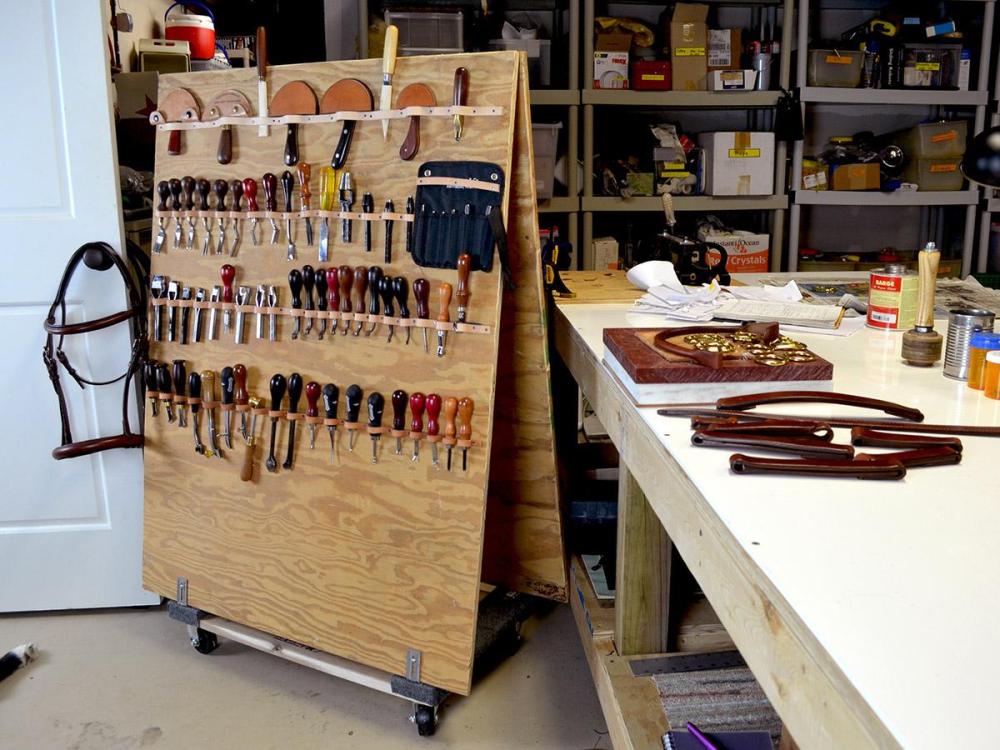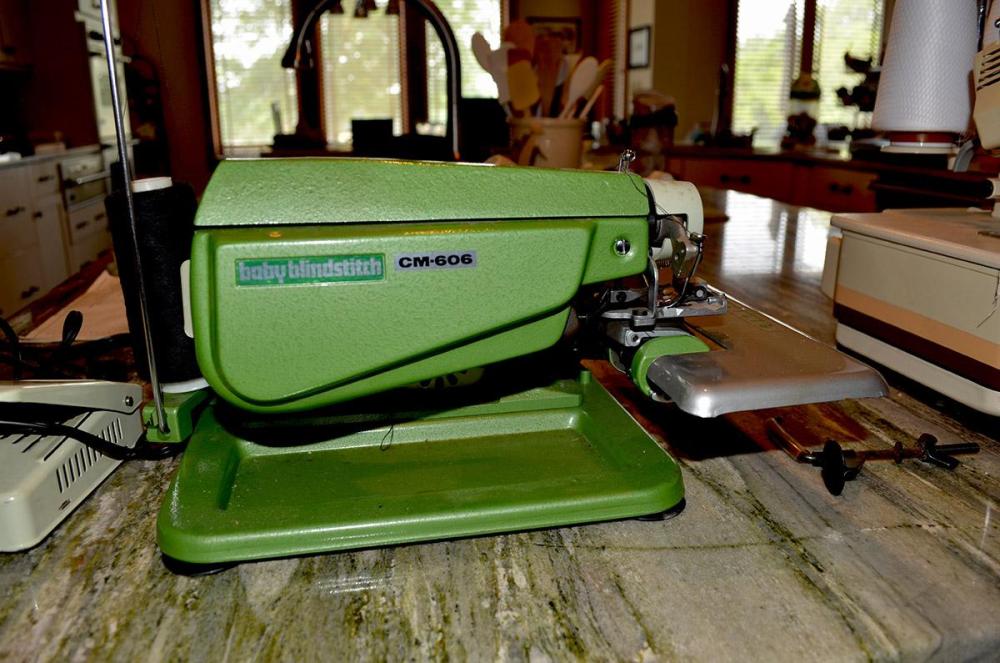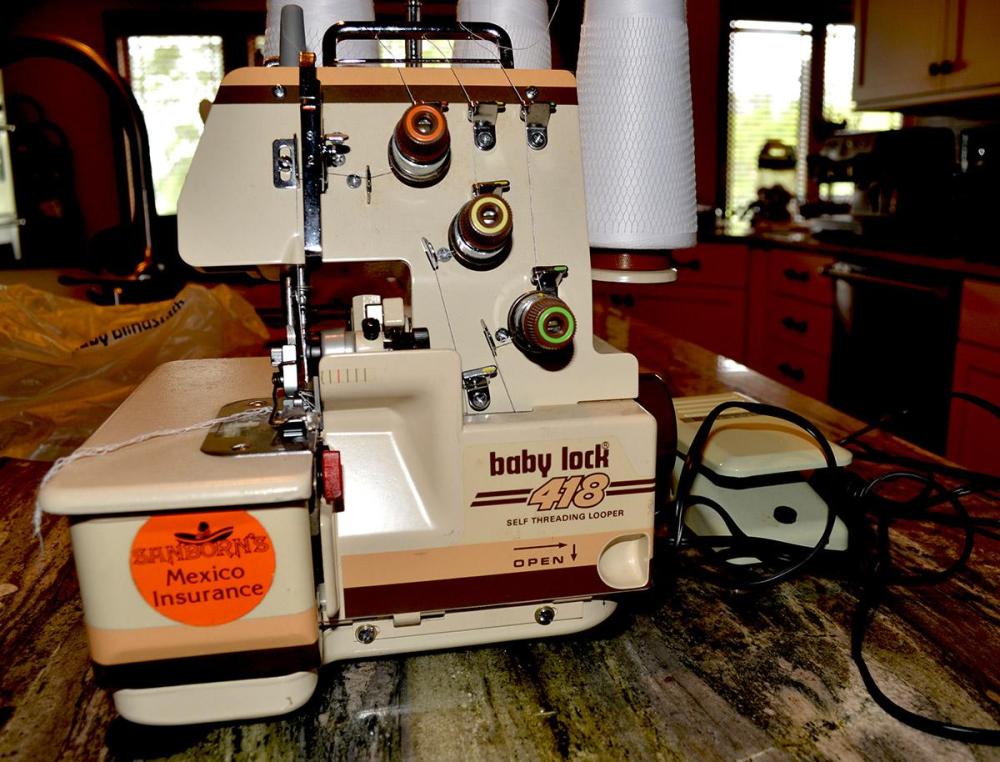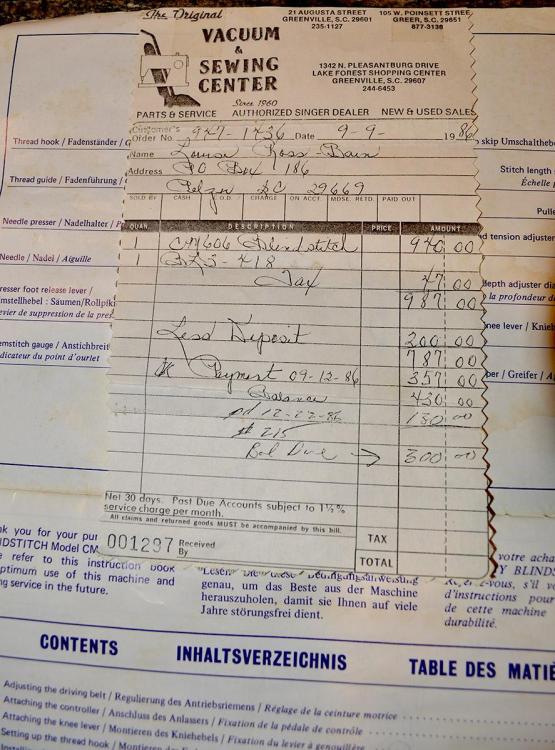-
Posts
1,284 -
Joined
-
Last visited
Content Type
Profiles
Forums
Events
Blogs
Gallery
Everything posted by TomE
-
Really cool! Your artwork reminds me of an Andean geoglyph.
-
I've been using a Weaver Master Tool draw gauge for 3 years and been very happy with it. The Weaver blades are almost sharp when new. Osborne blades require a bit of work to sharpen. I would expect that Bruce Johnson would sell you a draw gauge with a razor sharp blade ready to go. I prefer a wooden strap cutter for widths less than 1/2" and for lightweight leather. Bruce has a useful tutorial on his website about the correct way to hold a draw gauge.
-
If you can slip in a few photos, I'd enjoy seeing the dogs and how they're harnessed. Like Gaia, our barn cats are top of the food chain around here.
-
Cutting plywood is about the extent of my woodworking skills but maybe I can find a ready made tray. Thinking the magnetic strips would be good for storing harness needles. I don't know whether to be jealous or feel sorry for you.
-
Thank you. I haven't tried a magnet. I generally leave the knife (covered) on my bench while working on a project so I don't need a quick-draw option. Thank you. I'll still sorting out where I will store scissors, strap cutters, etc. They are in plastic tubs scattered around the edges of my shop. Thanks. Simple enough that I could pull it off.
-
My workshop has no wall space - it's taken up by shelves filled with other "stuff." Decided I needed a better place to store my hand tools so I made a plywood A-frame and mounted it on a moving dolly. Now I need more tools to fill the other side of the A-frame.
-
Second that. Neat design and well constructed. How do you make that edge? What I would call the binding in a fabric project.
-
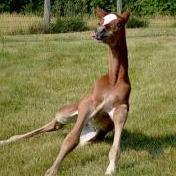
What is this kind of buckle called, and where to get it?
TomE replied to MtlBiker's topic in Hardware and Accessories
Batz Corp calls them safety hooks. Not sure if you need the exact shape shown in your picture. https://products.batzusa.com/category/safety-hooks -
Looks nice. Will be interested to hear how this punch holds up with use.
-
I agree that using an awl is fast and learning how to clamp the work so that your awling is consistent is just as important as how to juggle the awl and needles. And awling is fun!
-
Guess I'd better learn how to sew. The gal I married was a skilled seamstress but she hasn't sewn much in 40 yrs. Hope to lure her back into sewing as my teacher when/if she ever retires.
-
Bridle leather is difficult to burnish - fluffy fibers stuffed with fats and waxes. The best method I've found is to dye the edges with a 50:50 mixture of Pro Dye and Martin's Edge Solution then burnish while wet. Be generous with the dye/edge solution. I start with a wooden slicker on a burnishing machine then finish with canvas but canvas only will also work. Can do a bit of sanding then apply another coat if needed. Your file organizer is first rate craftsmanship.
-
Fiebings Pro Dye (formerly Oil Dye) has less tendency to dry the leather compared to Fiebings Leather Dye. I think both dyes contain an alcohol based solvent, which is why I avoid dip dyeing projects. A light coating of neatsfoot oil after dyeing seems to correct the problem. I also apply conditioner as a final step.
-
Thanks, @Wizcrafts. Will be fun to experiment once I get familiar with sewing lightweight fabrics.
-

Second set of rolled handles ever done. Tote Bag Repairs
TomE replied to YinTx's topic in Show Off!!
I posted a writeup on halter making in the saddles and tack accessories forum. -

Second set of rolled handles ever done. Tote Bag Repairs
TomE replied to YinTx's topic in Show Off!!
The handles look very nice. I use Stohlman’s method for handle #17 in Case Making v. 2 for a rolled throatlatch on horse halters. Might be too stiff for a bag. -
Got a bit far afield but couldn't pass up these Juki blind stitch (CM-606) and loop stitch (BL3-418) machines for $120. Seller's grandmother paid considerably more in 1986, and the lack of wear on the foot pedals suggests either grandma sewed in stocking feet or these machines haven't had much use. Hope the serger will handle canvas and the blind stitcher, well it's pretty cool even if I don't find a legitimate use for it. Will be oiling them and working on learning to adjust and use them this week. My excuse to my wife for this purchase is to sew fabric liners for leather bags. Maybe even horse blankets? I have the user manual for the blind stitch machine and I'm looking for a manual for the loop stitcher. I see several online sellers who want $10-$20 for a photocopied manual. Would welcome suggestions for books or online resources for learning fabric sewing techniques.
-
This product is designed for that purpose. It penetrates the leather and holds the fibers in place. It is water based and I dilute it 50:50 with water and apply it in 2 coats, working it with a glass slicker. It is flexible and appears to hold up as well as the moss-back of bridle leather. Folks also use waxes, PVA glue, and burnishing compounds for this purpose.
-
I've been pleased with Ron's Leather Tools French edgers if you decide to make a change. Worth a look.
-
Rethread your machine making certain that it's threaded correctly. The thread path on a Class 26 has a couple of subtleties, there's no written instructions (?), and I watched several different instructional videos before I realized my mistake. That said, it's a handy little machine that does a great job running through all sorts of materials and thicknesses.
-
No experience with driving harness and tack. The buckle type billets that I see for riding bridles and reins are constructed similar to the smaller/lower set in your pictures, except they typically have a fixed loop in front of the buckle and one or two loops behind. I like the looks of your billet and think it would be at least as strong as the other. Perhaps a running loop on the front/bit end of the buckle would keep the buckle flat and tidy?
-
Thanks. Fun to see this method. I make rolled throatlatches for horse halters. I posted a description of the method in the Saddles and Tack Accessories forum.
-
A classic. Very nice work. Do you trim the edge of the round handles after sewing? How do you get that close to the edge? Now I see that it is hand sewn. Lots of work!
-
Very pretty. The background nicely sets off the artwork.
-
I think using a stitch groover is more about aesthetics than preventing wear. I would be interested in people's experiences with stitches breaking because of abrasion. I've only seen it happen on the toes of my work boots when they are well worn. For horse tack it is usually the leather that breaks, not the stitches. As a corollary, I don't see that machine stitching unravels and is somehow inferior to hand sewing, but I digress. I don't use a stitch groover for sewing because I'd rather not remove the grain, the strongest part of the leather. I do use a heated crease fairly often, but mainly for decorating straps that aren't sewn except at the ends for attaching hardware. To answer your question, if you like the look of stitches in a groove I'd keep doing it. I think the quality of tannage and weight of the leather will determine the durability.



